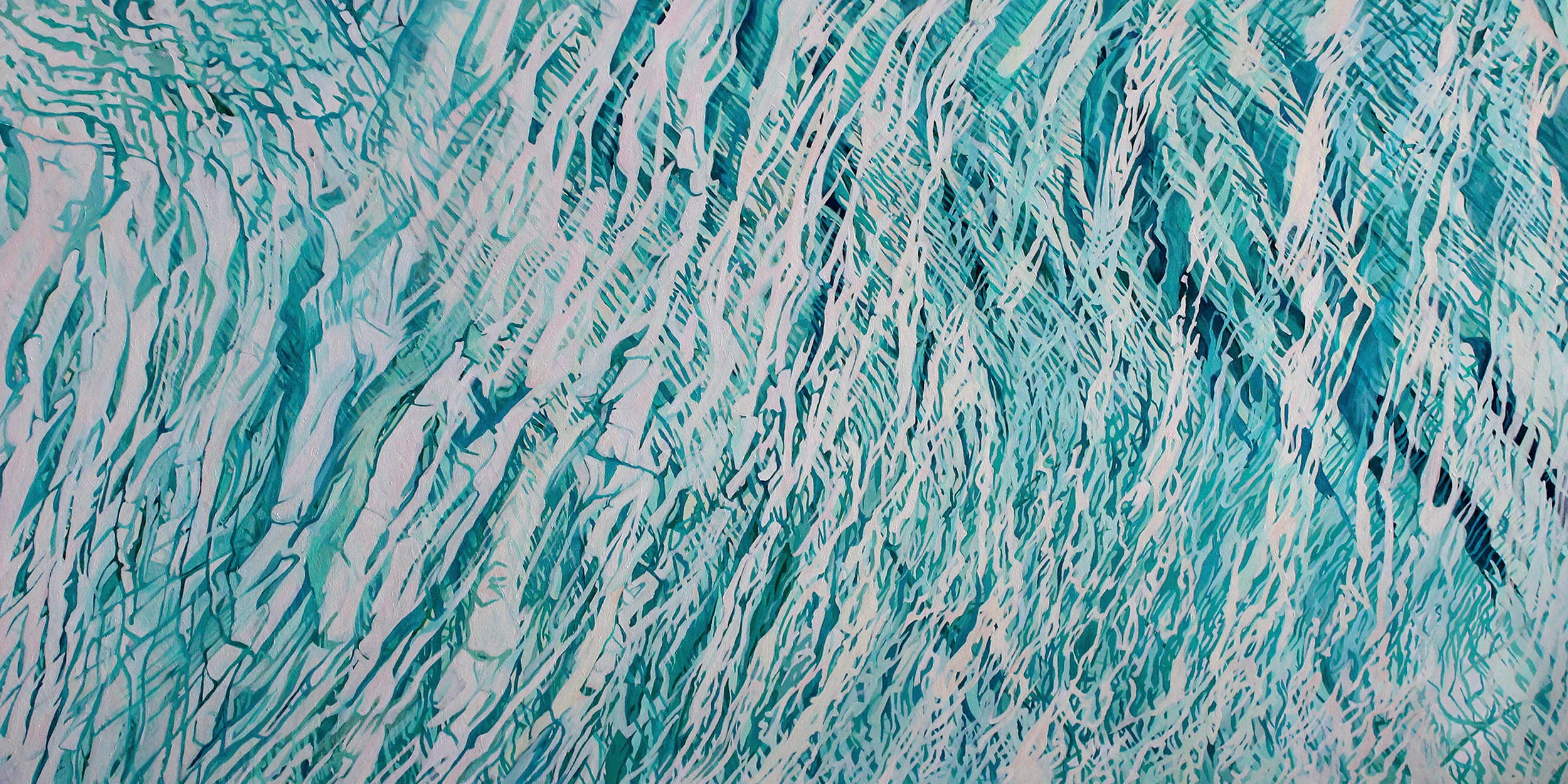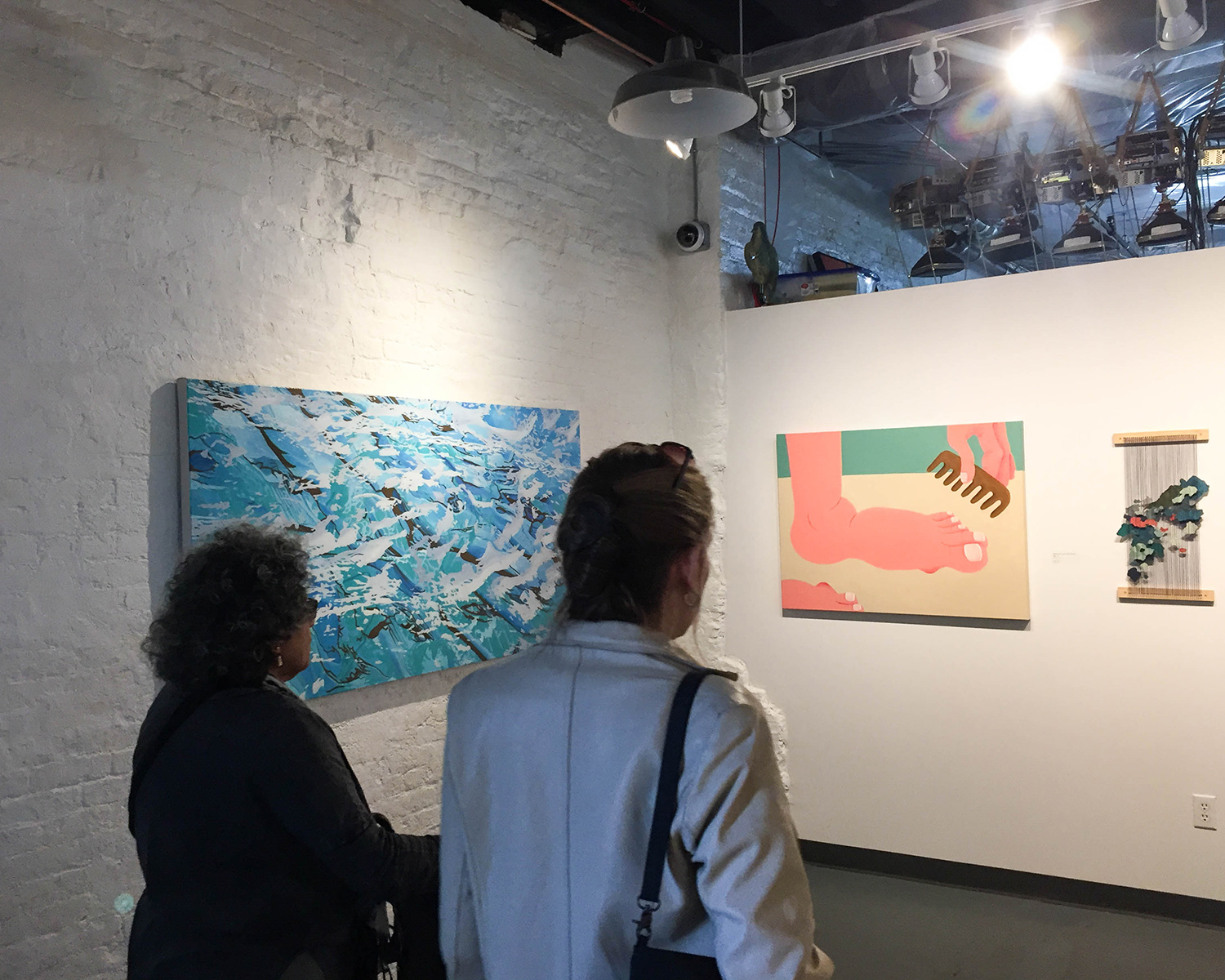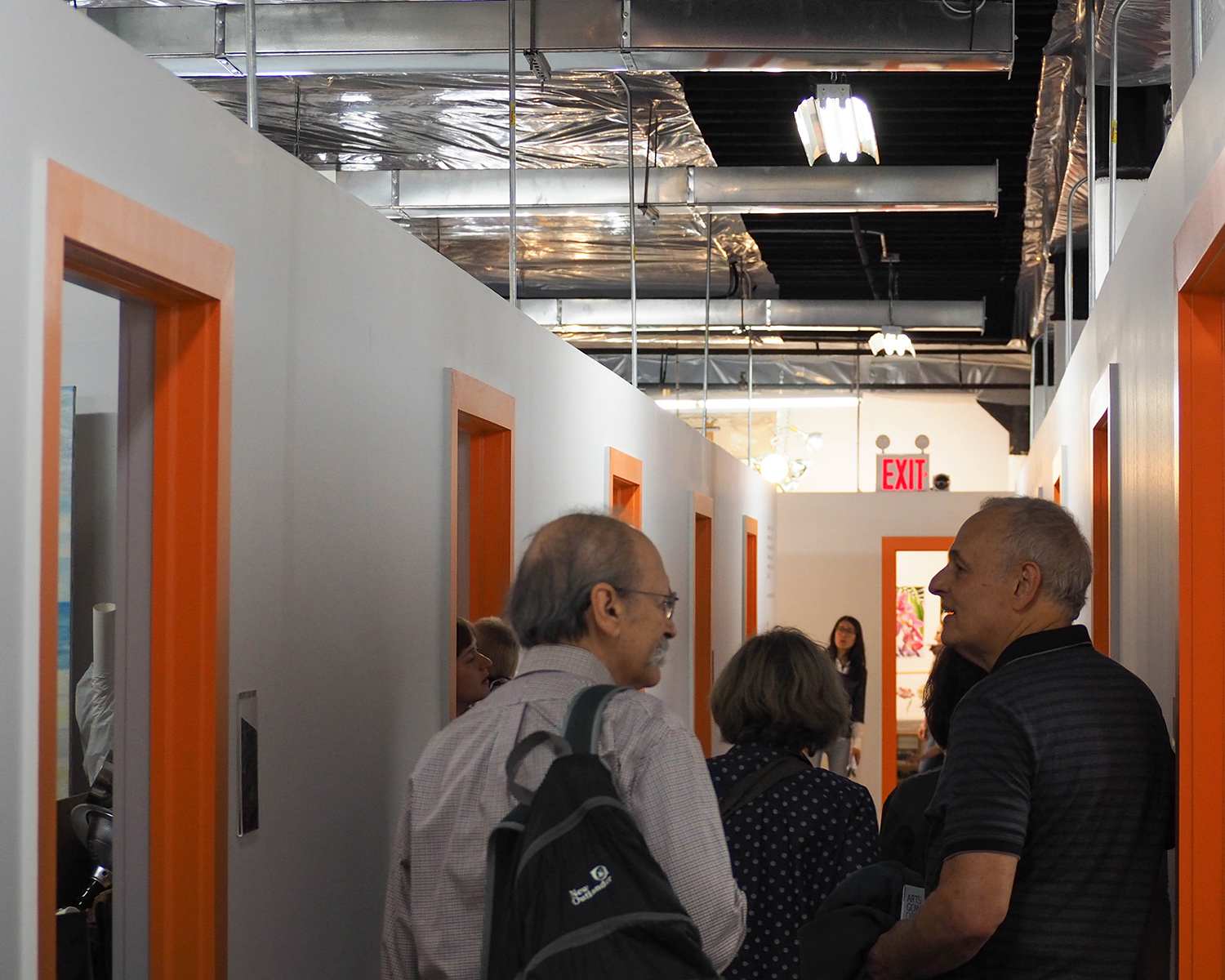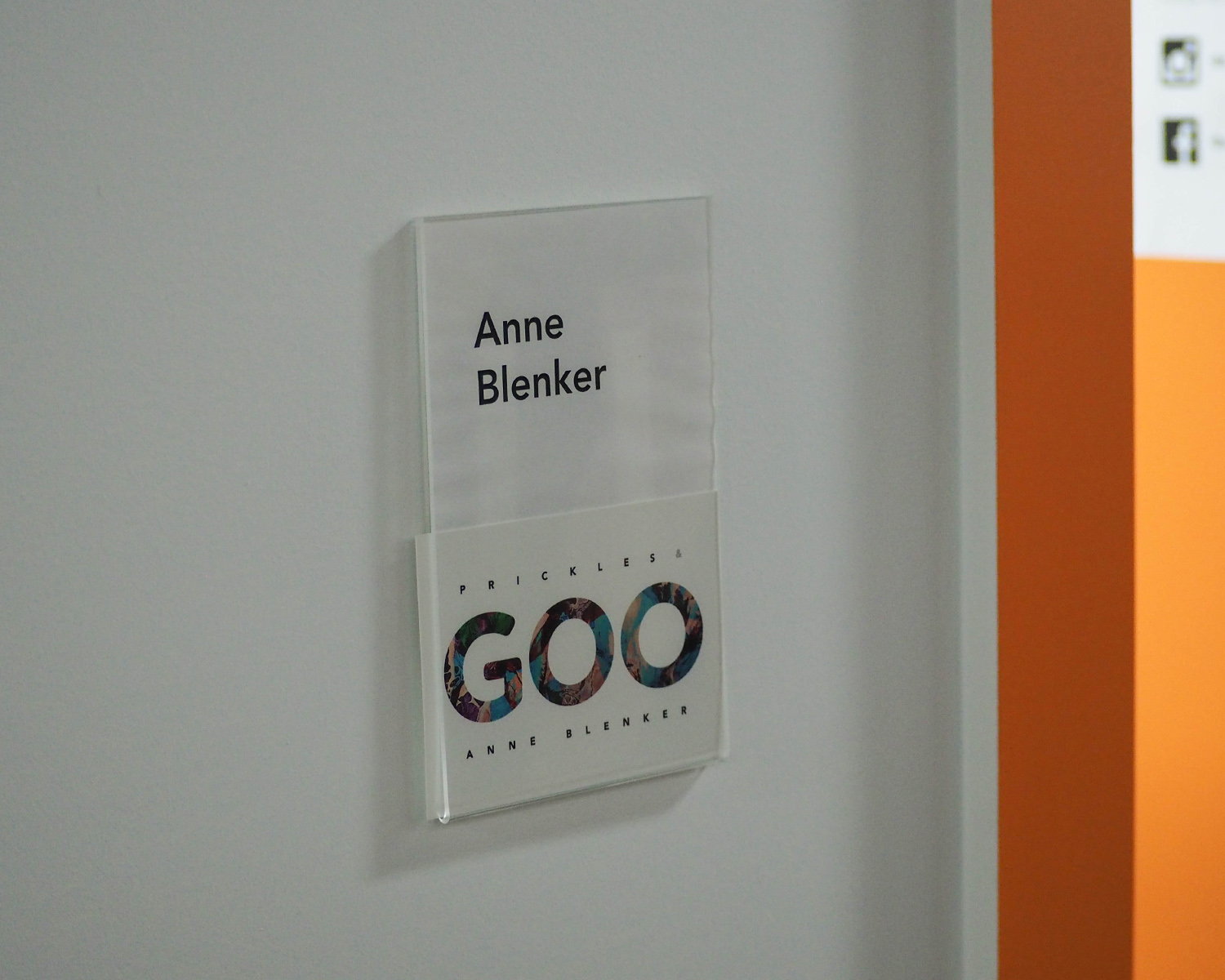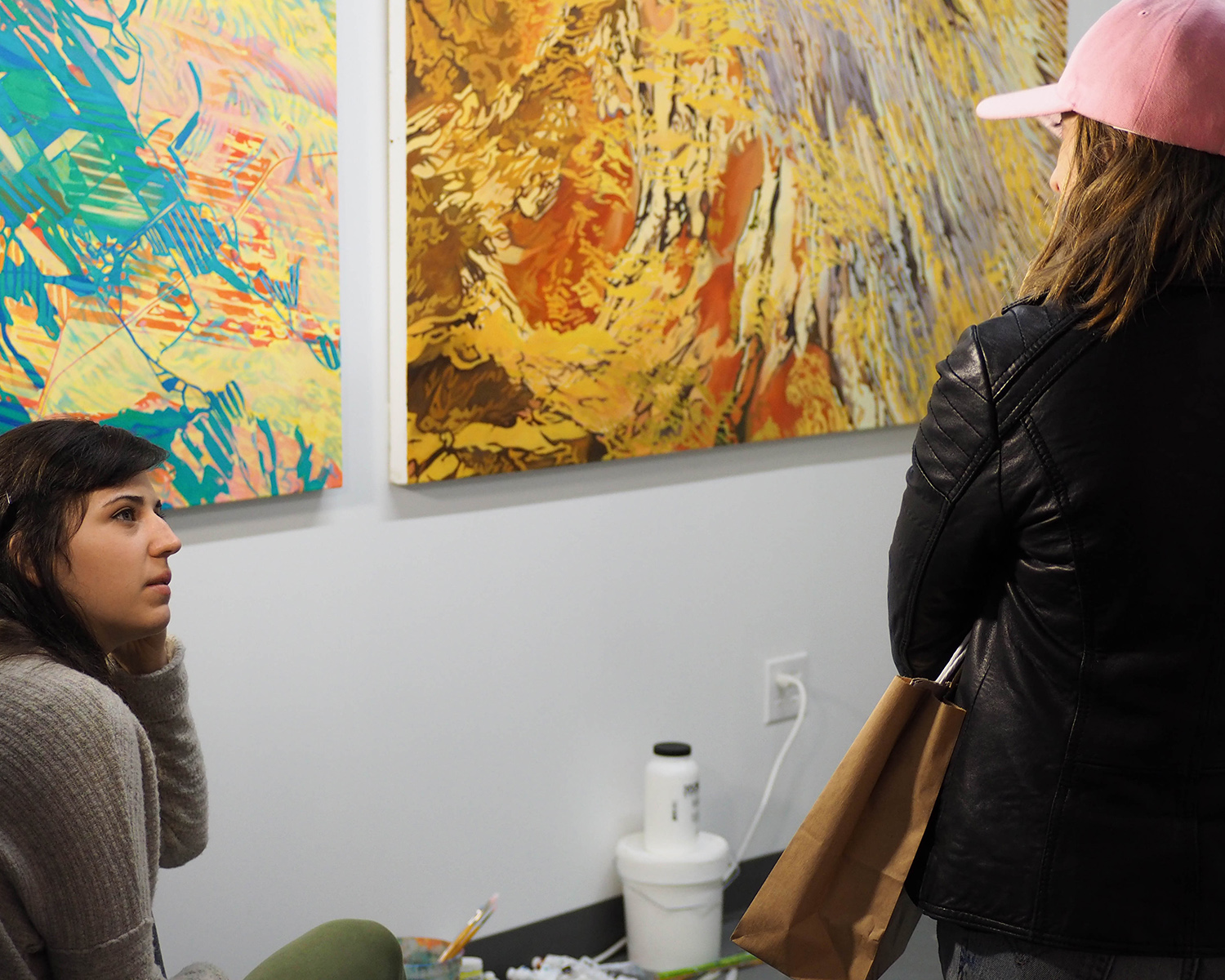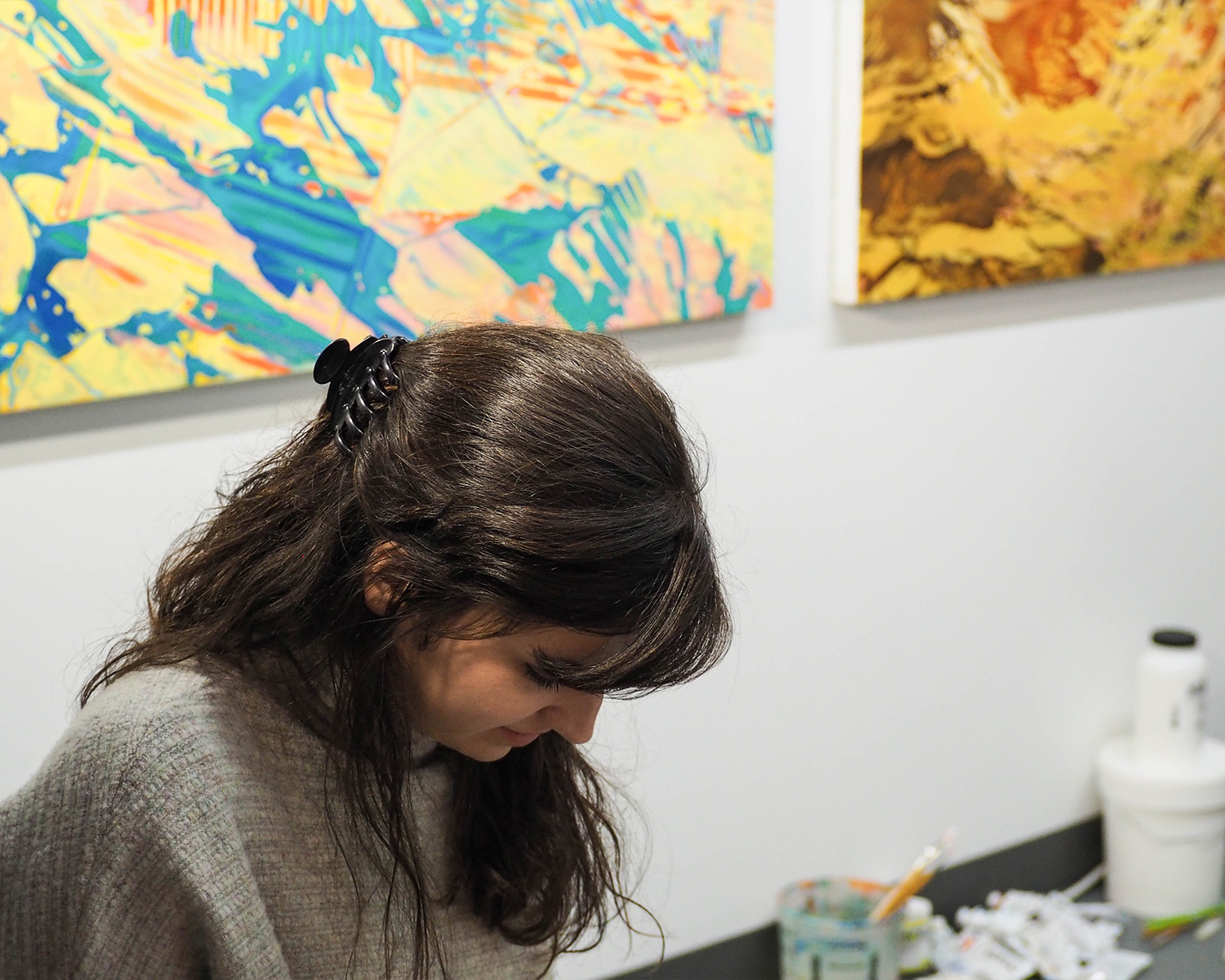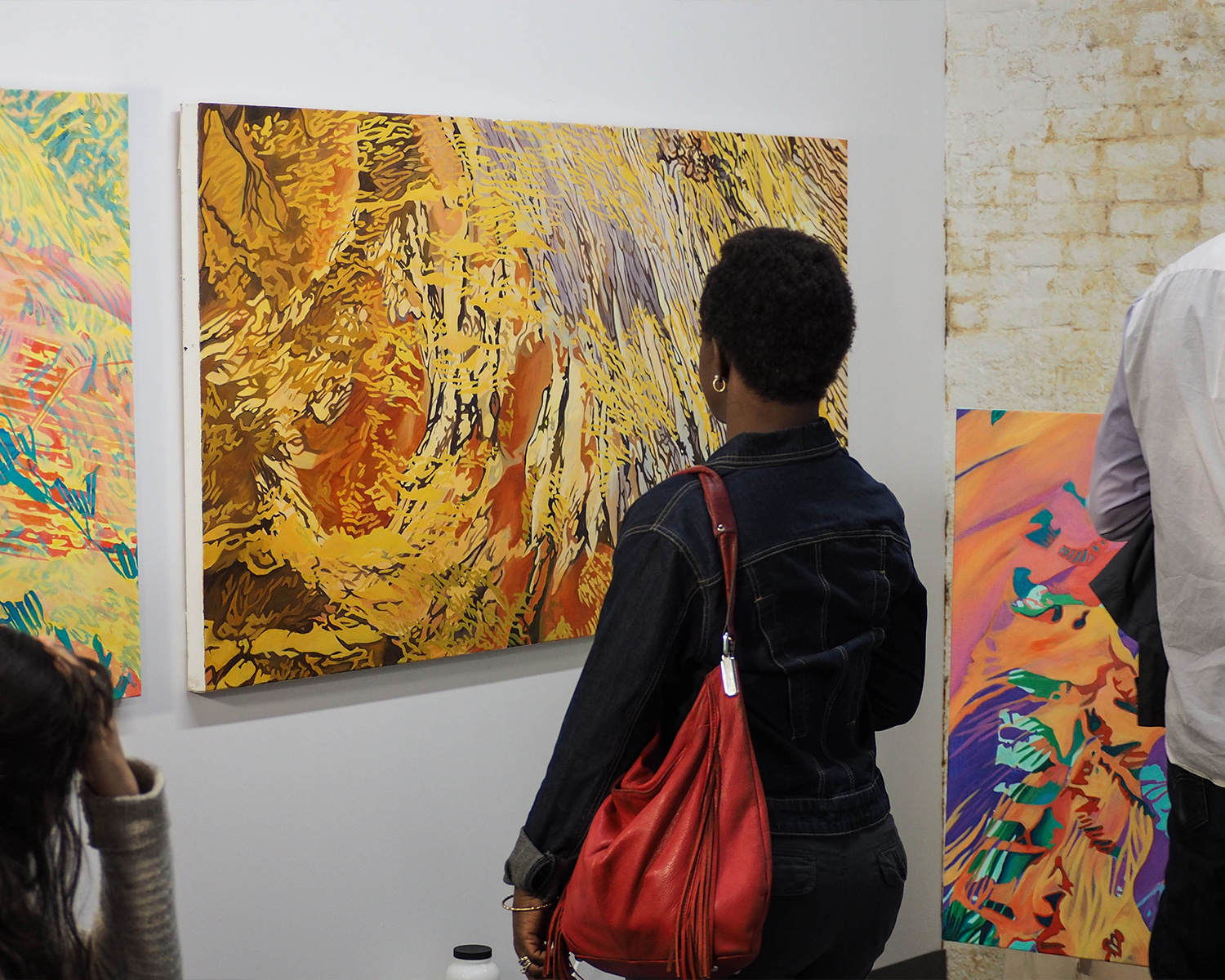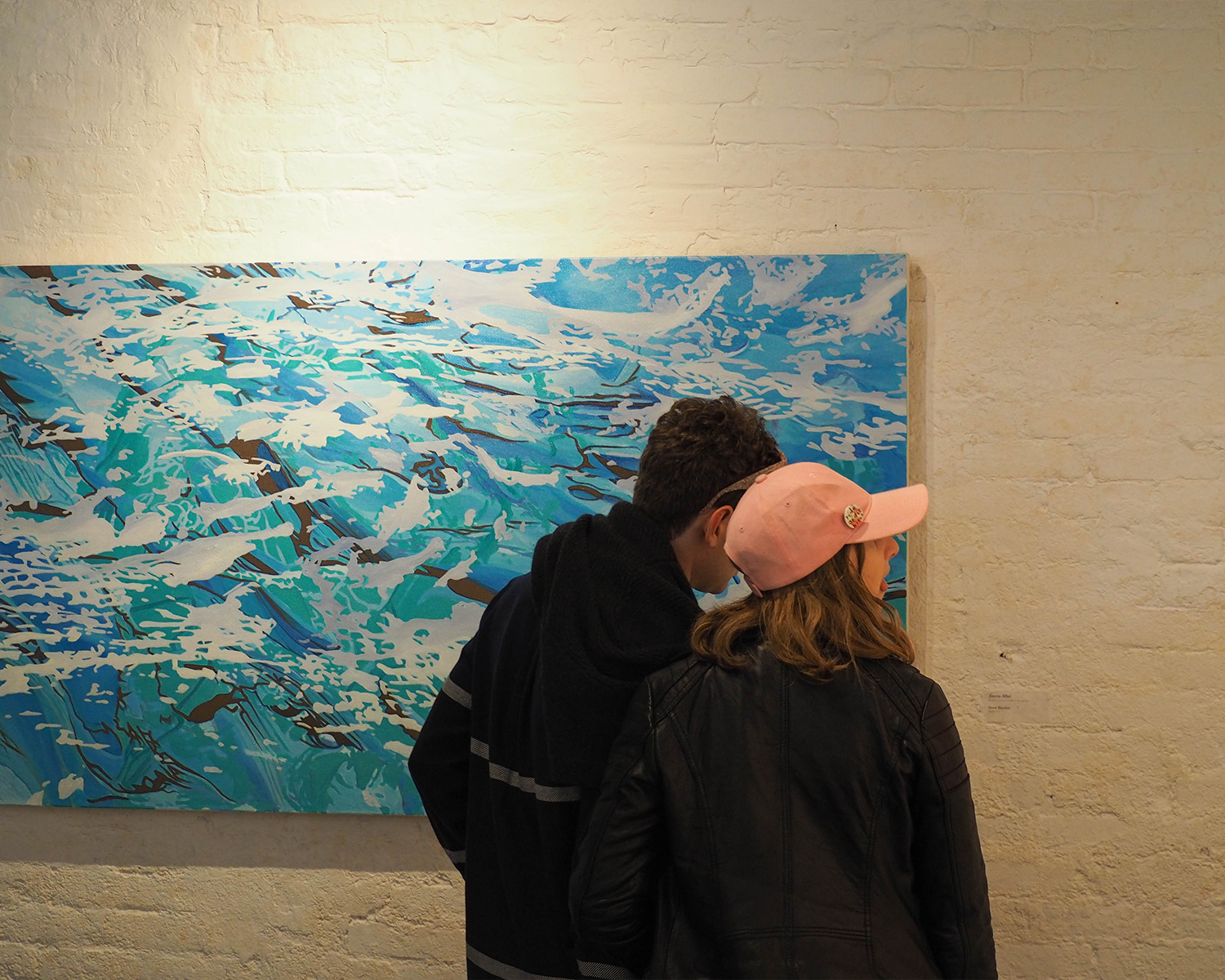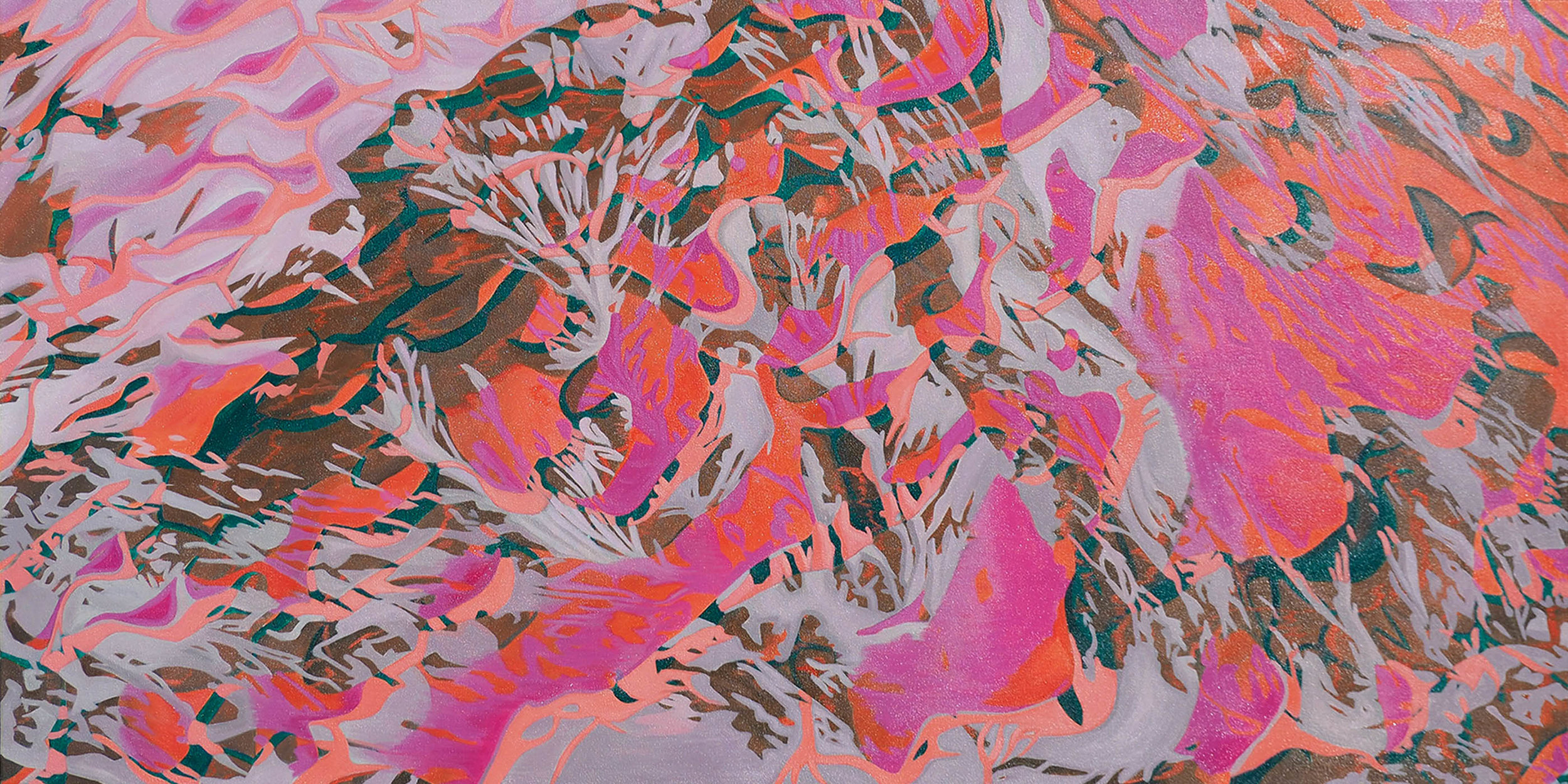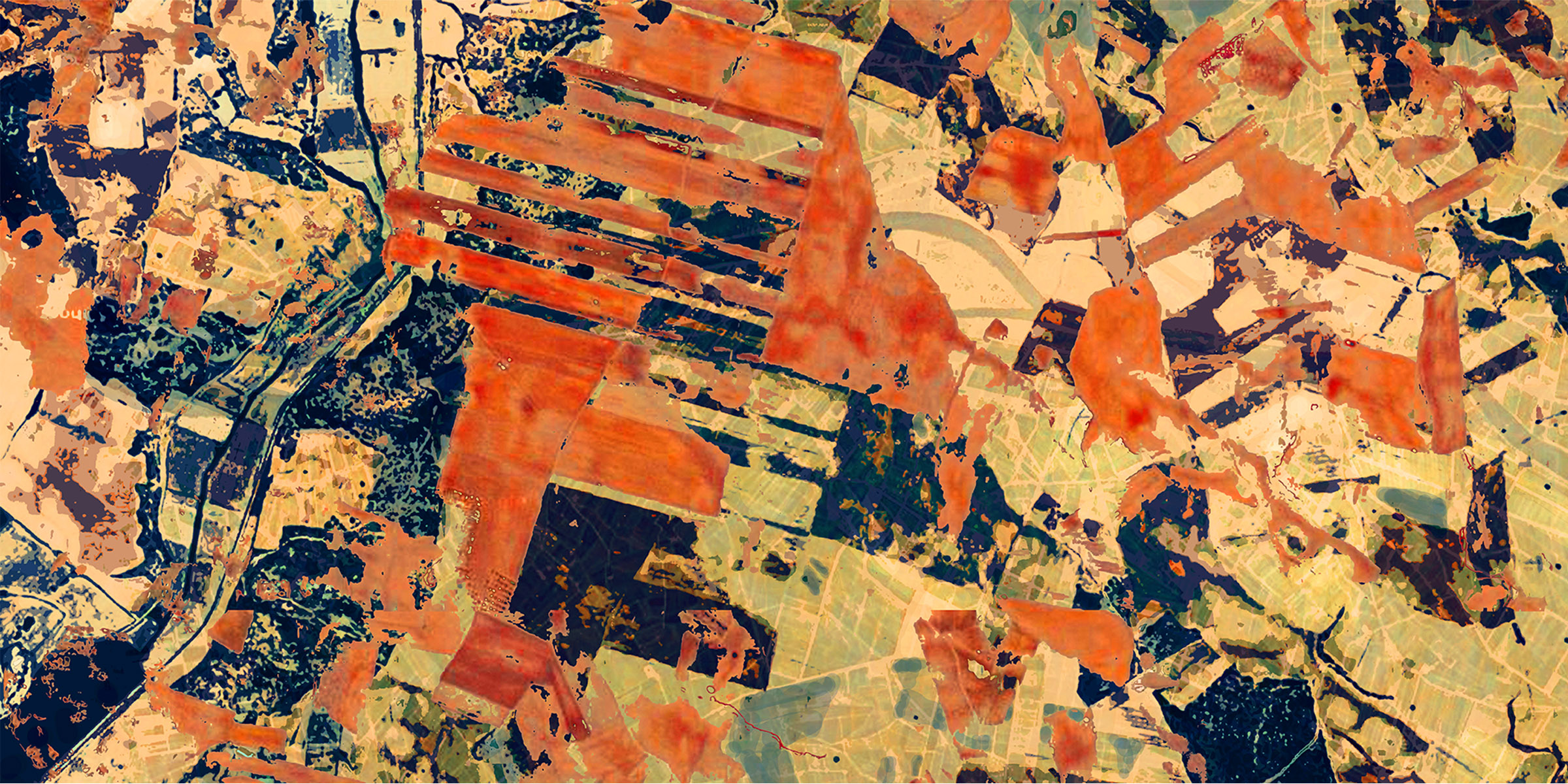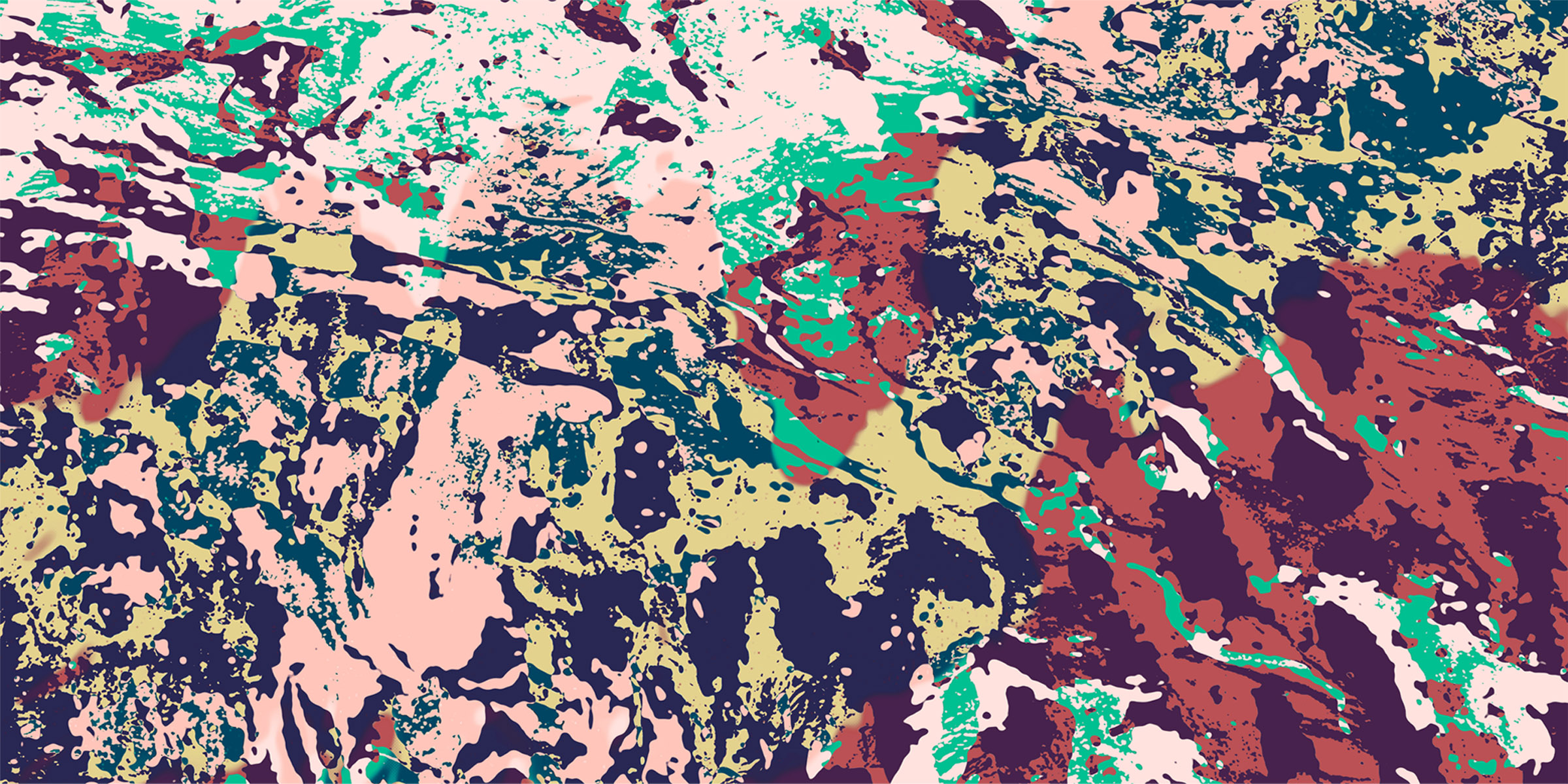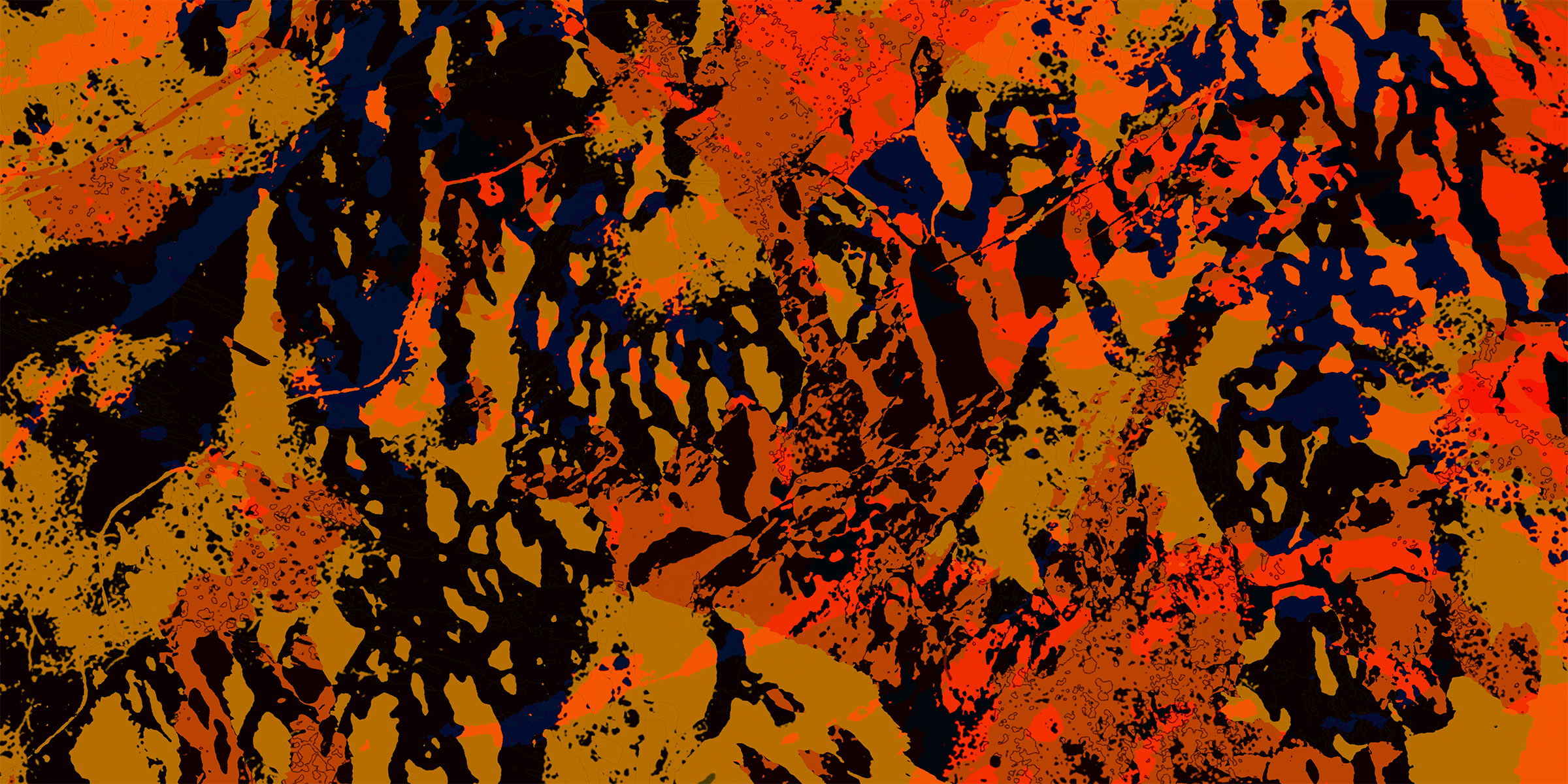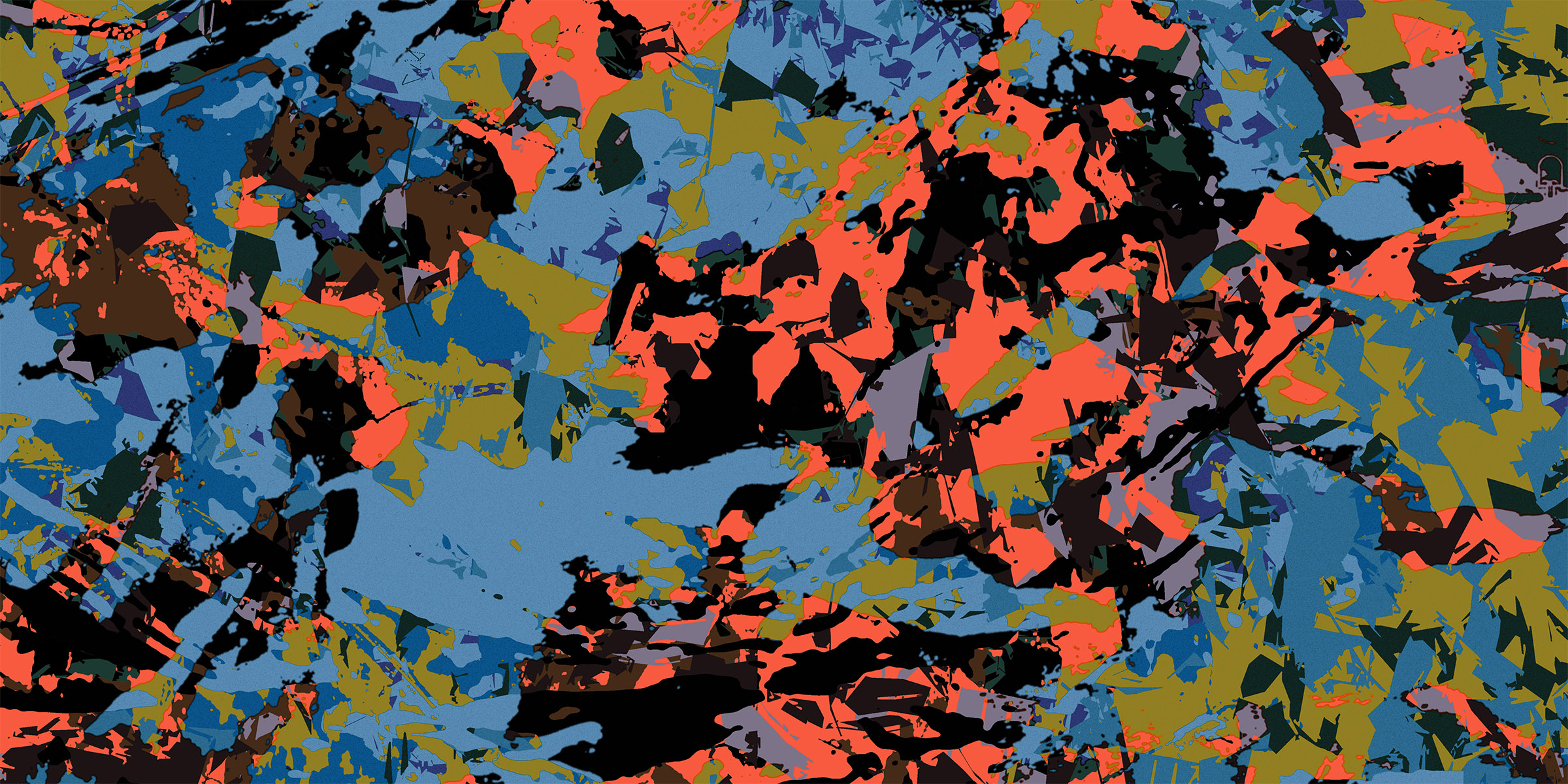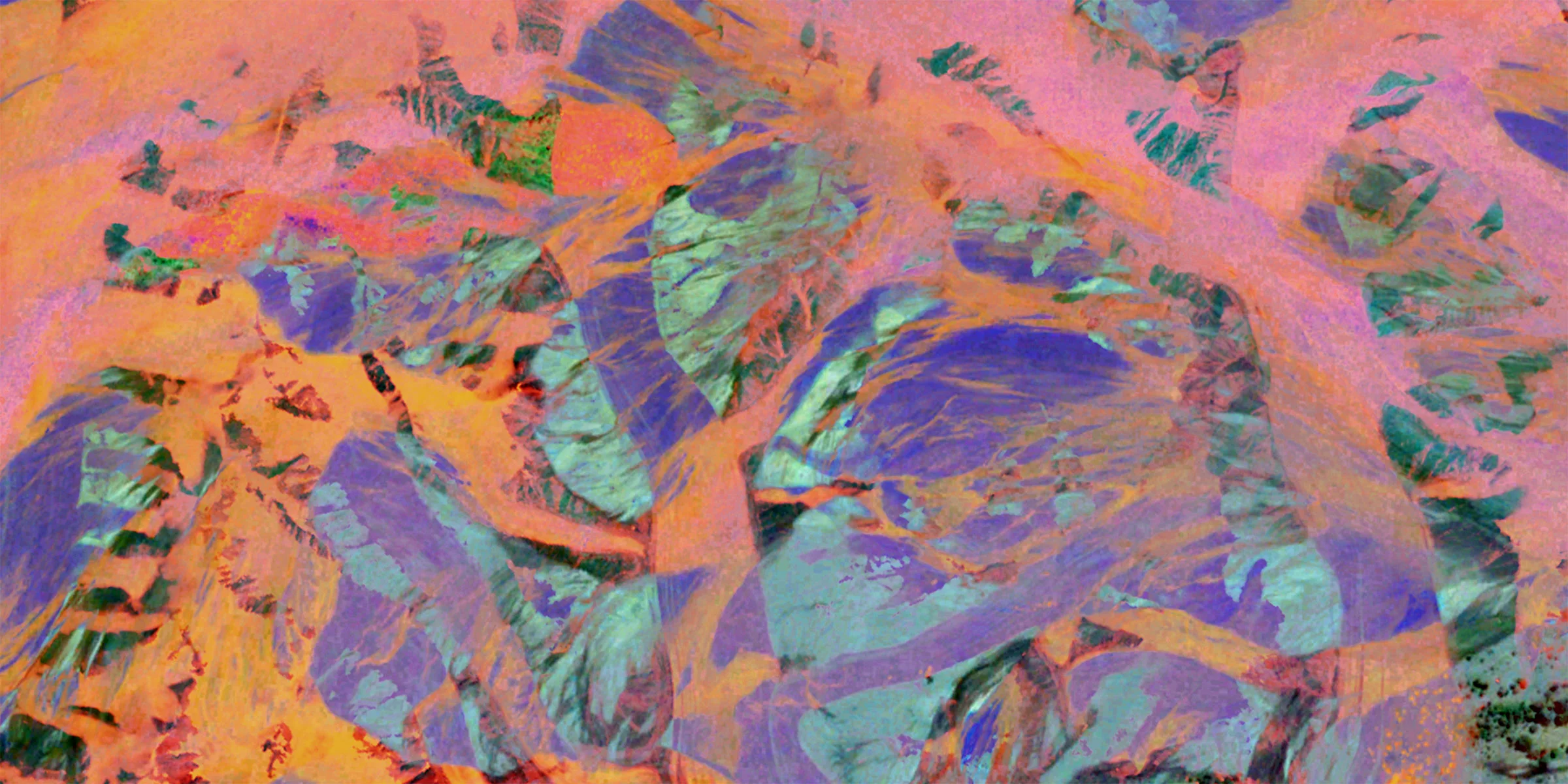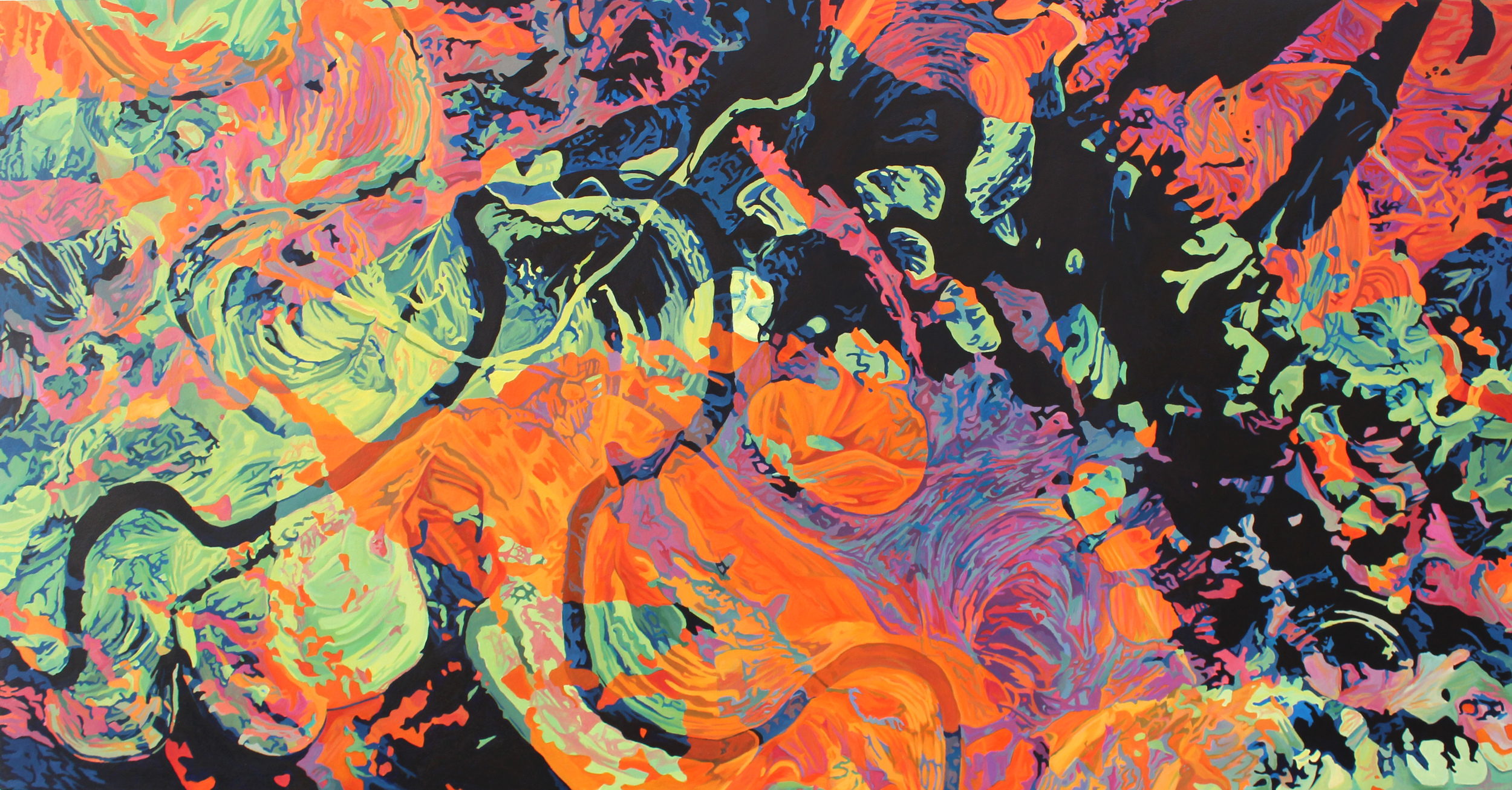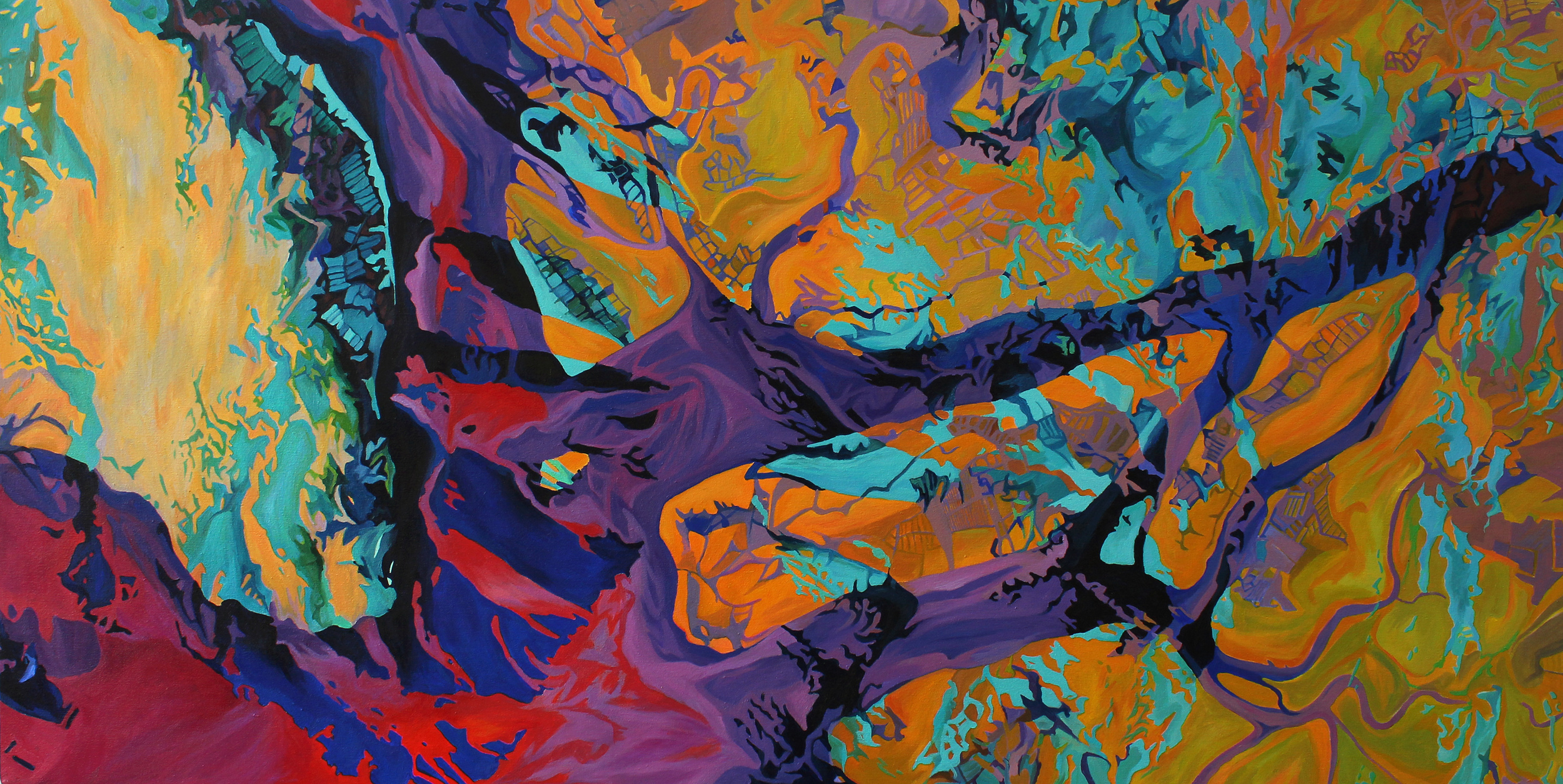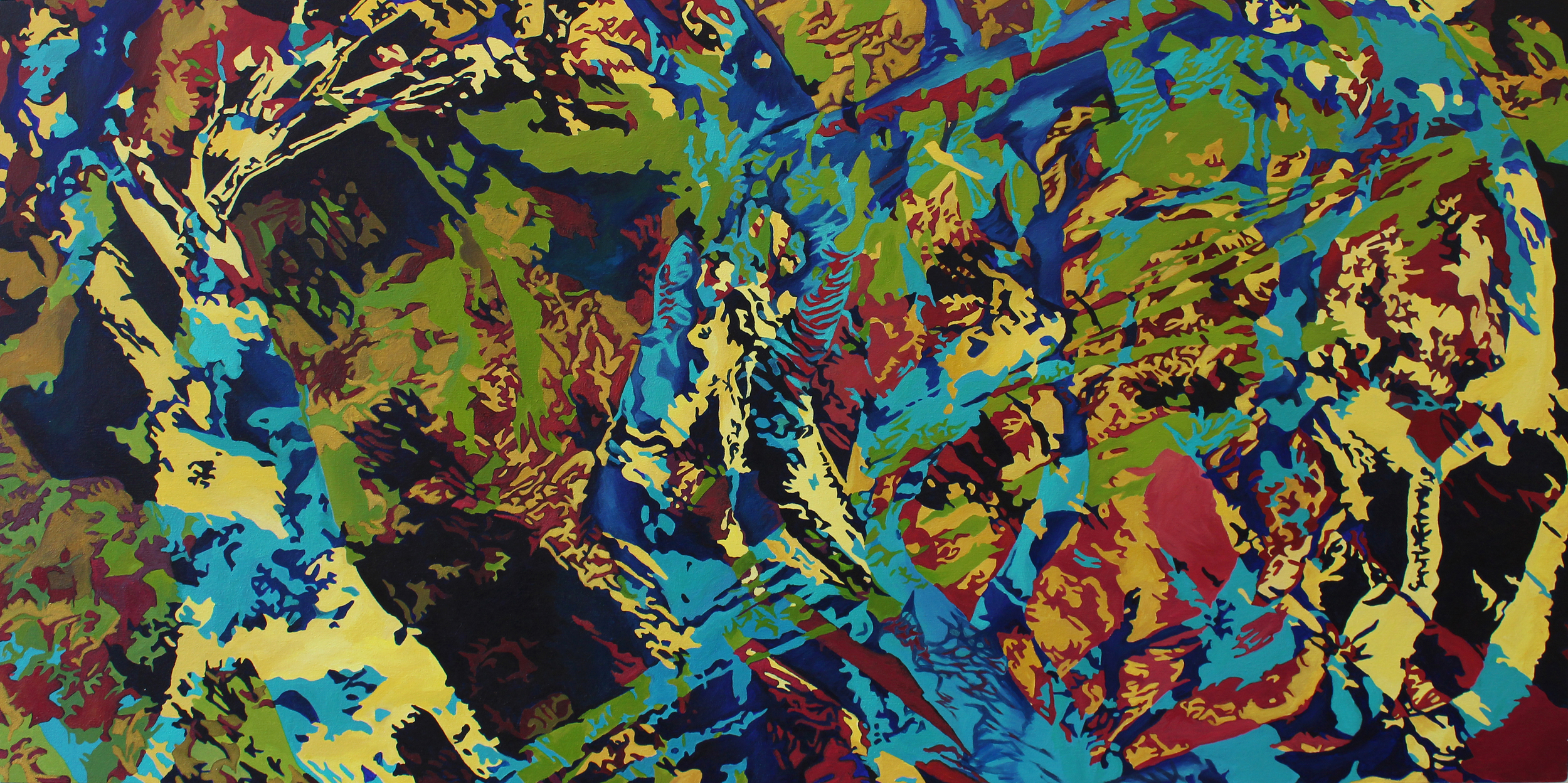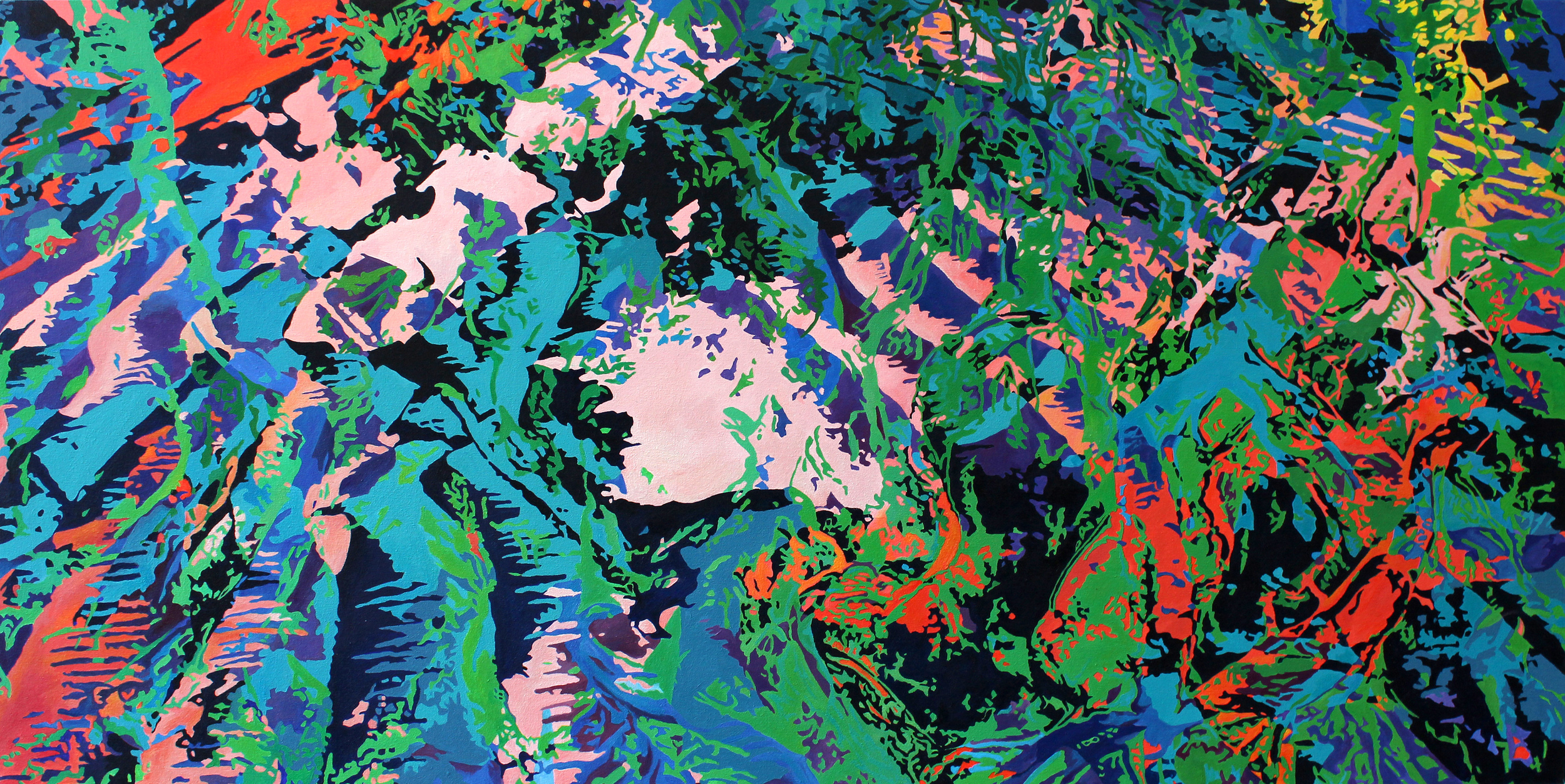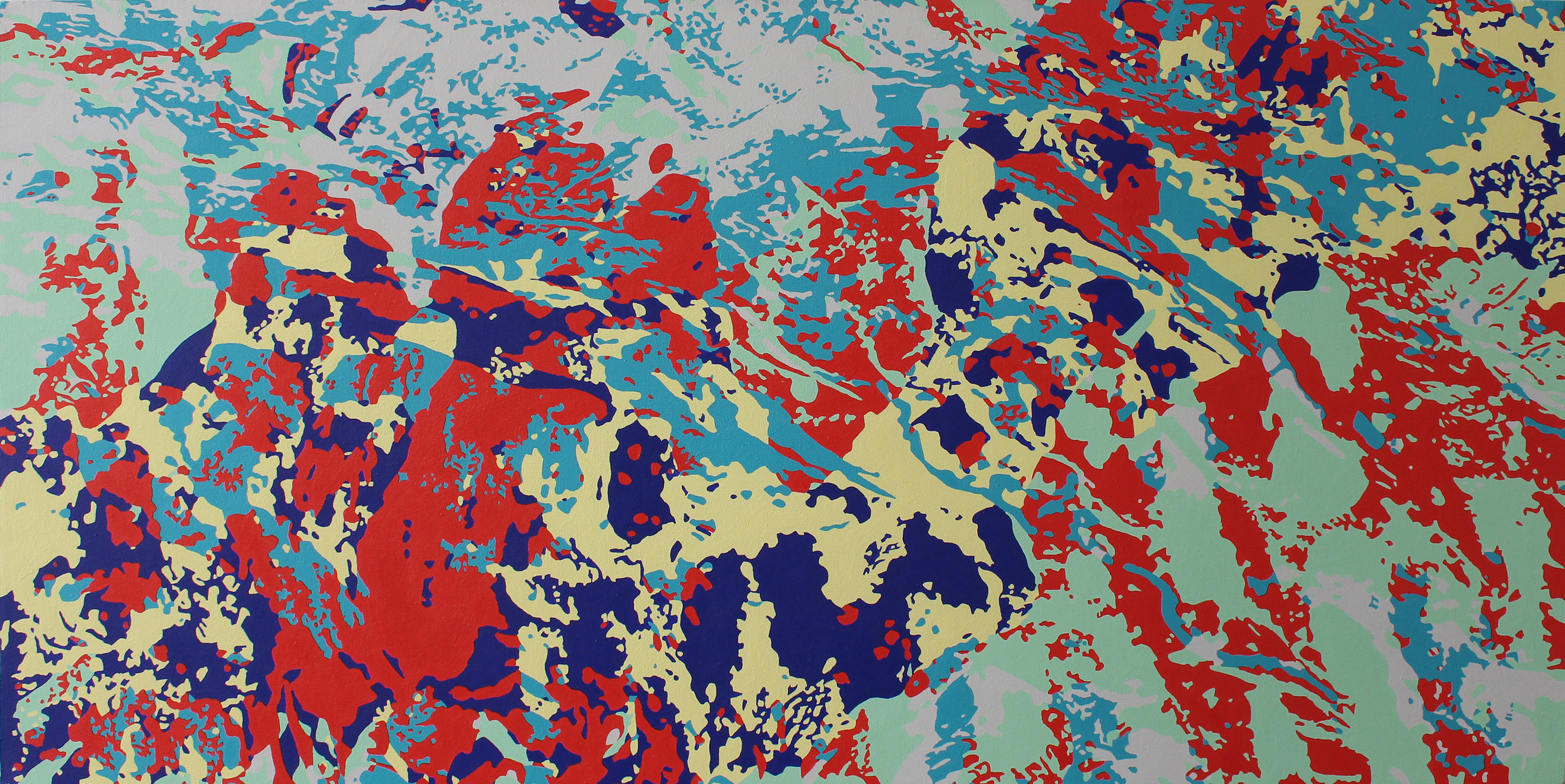This past year I moved to Brooklyn from NOLA and immediately set up shop at my new Spaceworks studio in Gowanus. I continued the work on my ‘Water’ series and completed four 4’ x 8’ pieces. I also created an online viewing experience that highlights my process and the discovery involved in that series. Check that out at water.anneblenker.com
Here are the paintings from 'Water':
This year created a transition in my process of painting. Instead of recreating a composition directly from the mockup I physically layer the paint as it appears in Photoshop. This was explored in my ‘Water’ series, but also my next series entitled ‘B-sides’ in which I continue the process of layering and manipulating aerial imagery to create designs that I then paint.
Here are the paintings from 'B-Sides':
I had a great experience opening up my studio in October at Gowanus Open Studios and being involved in a group show during the event. I even got a nice little interview with Open House Blog, which you can read here.
I continue to have a strong connection to New Orleans and fly back frequently. I had a solo show at Manhattan Jack this past year and currently have pieces in ‘Southern Abstraction’ a 2-part group show at the Where Y’art Gallery and Old No. 77 Hotel & Chandlery curated my Don Marshall, executive director of Jazz Fest, that is up till April.
Reflecting on the past year and looking to the future, I want 2017 to be a continuation of discovery in my process but also a time to clarify the communication in my work. I feel that now more than ever is a time to explore our changing relationship with the Earth and what that means for the future. Change is inevitable, but what happens to a world with a diminishing connection and loss of literacy with nature? I have transitioned my reading and research to focus on these concepts and look forward to exploring them within my work. I have 9 pieces at 24” x 48” on the way and I am about to release a new shop in which I am selling a selection of archival prints of my work. Stay tuned!

